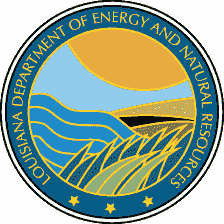Top Stories
La. Coastal Zone Inland Boundary Changed by Act 588
BATON ROUGE- The process began in 2009, as law makers authorized a comprehensive evaluation of the state’s coastal boundaries, and today, with the signing of Act 588, Louisiana’s coastal zone boundary is officially redrawn. Over the course of time and mostly natural conditions, the inland boundary of the state’s coastal zone has increased by about 12.6 percent.
The original coastal zone boundary was established in 1978. In 1979, 1980, and as recent as 2010, state laws have refined the boundaries to better manage and protect Louisiana’s valuable coastal resources. Governor Bobby Jindal signed HB 656 by Houma Rep. Gordon Dove, who introduced the proposal for redrawing the boundary in this legislative session as chairman of the House Natural Resources and Environment Committee.
Rep. Dove said, “Our coastal boundaries must be protected, and managing our resources so that we don’t have continued land loss− truly is a priority for our coastal communities. We all recognized the need to make changes after more than 25 years, so we did, and it is just as important now to continue to be good stewards where we live, work and play.”
State Department of Natural Resources Secretary Scott Angelle said the department’s Office of Coastal Management (OCM) is updating its website with pertinent information about the boundary changes, and with maps of the revised boundaries. The new coastal boundary defines the area covered by regulatory programs administered by the OCM to manage and protect Louisiana’s coastal resources. Angelle also noted that the OCM is working closely with the U.S. Army Corps of Engineers’ regulatory office to ensure that these additional areas in the coastal zone are covered by the Programmatic General Permit, known as PGP, and the joint permit application system administered by those agencies in the Louisiana coastal zone.
Of the 20 parishes in the coastal zone, the coastal area in 8 parishes is now expanded, 2 parishes have had a reduction in their coastal area, and 10 coastal parishes remain unchanged.
Terrebonne Parish President Michel Claudet stated, “Expanding the Louisiana Coastal Zone is a great step by the State in ensuring our coast is protected and sustained to the extent it needs to be. We look forward to working with DNR to ensure the permitting process is not another cumbersome level of bureaucracy, but a process that can encourage development, while protecting our vanishing wetlands.”
The boundary changes can be seen online on the department’s website at http://dnr.louisiana.gov/index.cfm?md=pagebuilder&tmp=home&pid=928.
The changes resulted in increased coastal zone acreage in the parishes of Calcasieu, Cameron, Iberia, St. Martin, St. Mary, Terrebonne, Lafourche, and Assumption. Tangipahoa and Livingston parishes had a decrease in coastal zone acreage. There were no boundary changes in Vermilion, St. John, St. James, St. Charles, Jefferson, Plaquemines, Orleans, St. Bernard, St. Tammany and Ascension parishes.
In 2009, the La. Senate directed the Coastal Protection and Restoration Authority (CPRA) to conduct a science-based study of the inland coastal zone, realizing that after nearly three decades since the establishment of the inland boundary, there had been deterioration of the state’s coast, devastating impacts from many hurricanes, adoption of a Coastal Master Plan, new information on sea-level rise, establishment of other coastal programs and boundaries, and unprecedented funding levels being applied to integrated coastal protection and restoration.
That study was presented to the Legislature in 2011, by the CPRA and became the basis for the coastal zone boundary changes authorized in Act 588. The study used up- to-date information for southern Louisiana parishes including storm surge, geology, elevation, vegetation types, soils and subsidence, and predicted sea level rise to come up with recommendations for the coastal zone boundary change. “It was a science-based approach that rendered us valuable guidance to help in the fight for coastal sustainability,” Angelle said.
Along with the online and web-based maps and information, DNR Office of Coastal Management is working to schedule meetings in the coastal communities in areas where the boundary changes have occurred. At those meetings, OCM will inform citizens about those changes and related permitting requirements, discuss actions underway to assist them in the coastal use permit application process and answer any questions they may have. Two meetings are scheduled so far, in Thibodaux on June 20, and in Houma on June 21. The listing of upcoming meetings are also available on the website.
News Archives »
